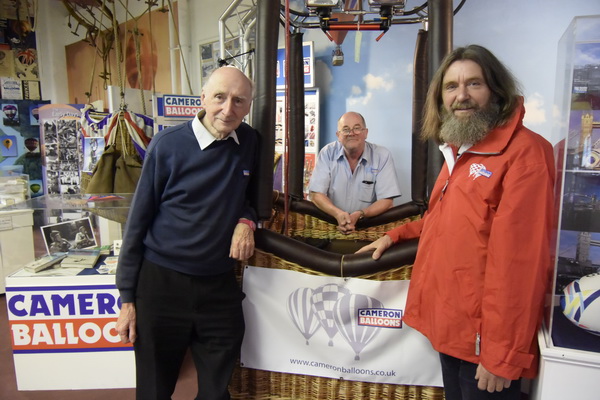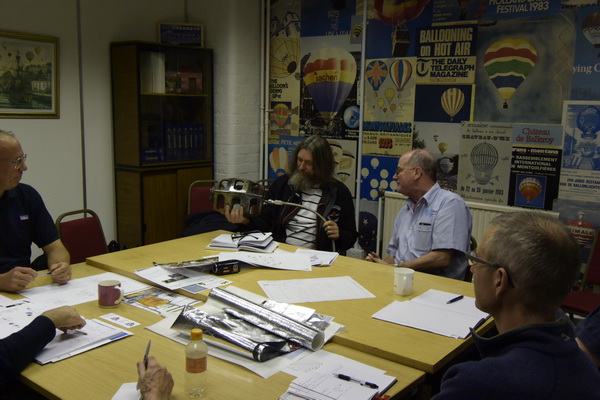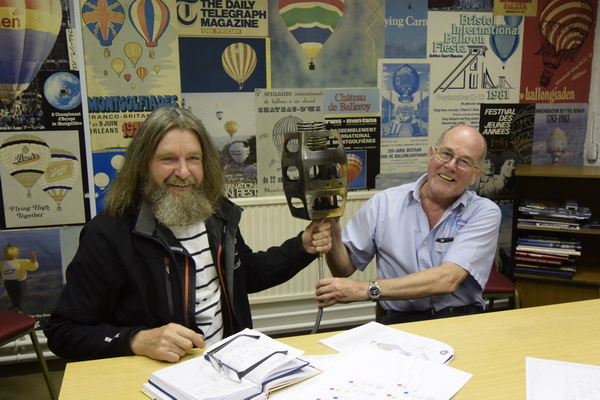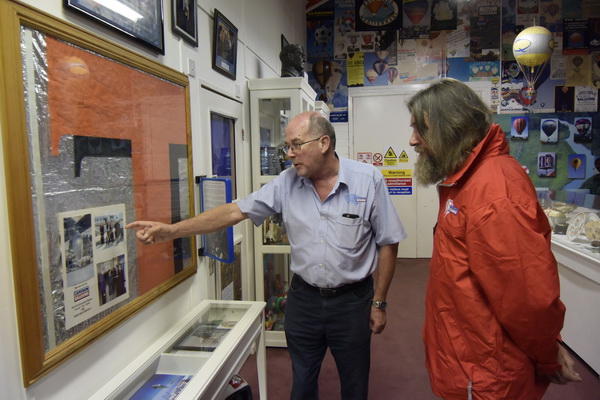Visit to Cameron Balloons

During his visit to Cameron Balloons at the end of September, Fedor Konyukhov met with the company founder, a legendary pilot and inventor, Don Cameron, and with Alan Noble, who was project manager for most of the world records flying Roziere balloons over the last 20 years.
At the Cameron Balloons factory, located in Bristol, England, the work of designing and sewing an enormous envelope the size of 15,500 cubic meters continues at full speed. Once finished, the envelope will be transformed into a MORTON Roziere balloon suitable for a solo flight around the world. Based on the size of the envelope, it is managed by more than one sewing-machinist. The balloon blue prints have already been completed, and now the work is focused on stitching and gluing a special sealant over the seams. The sealant will prevent gas leakage from the balloon. A machine that applies the sealant can reach temperatures of 300 degrees.

Fedor also met with a team of engineers to learn about the pilot capsule heating system. A heater that warms inside the capsule will be secured on top of the gondola. The heat will also be used for cooking meals, or rather, for boiling water, which is then added to a package of dry food. There will be no stove or burner inside the capsule. With the necessary 2.5 litres of water per day, Fedor will need at least 50 litres of water to last him 20 days in the air.

The engineers shared the blue prints and first prototype of a burner. It’s been decided to have six burners on board. They are similar to the ones used for a regular hot air balloon, but the size of these burners will be smaller. Professional opinion is for a flight around the world you don’t need more than two burners; however, with the six burners you have reserve, which gives you extra insurance. In 2002 Steve Fossett, completed his flight around the world with six burners, and the team decided not to change this tactic.
Detailed discussion was conducted about the propane cylinders. Propane gas will be used to fuel the burners. Cameron Baloons has developed innovative cylinders made of steel, which are 30 kilograms lighter than the ones for Steve Fossett’s flight. The weight of an empty steel cylinder is 45 kg and when it’s filled with propane it will weigh 180 kg. The plan is to take 34 cylinders for the flight that can last up to 20 days.

The team finalized the list of navigational and communication equipment as well as it placement inside and outside of the capsule.
Some time was spent discussing whether or not to bring a life-raft. The gondola is constructed in such way that it can serve the function of a life boat in the case of an ocean landing. However, it’s been decided to pack a two person life raft inside the gondola.

The tentative schedule for completing the balloon and fully equipped capsule is by the end of March 2016. Then the entire aircraft will be packed and shipped to Australia. The estimated arrival time to Australia is May 2016. The flight around the world is scheduled for the winter months in Australia (June, July, and August). Launch point – Northam, Western Australia. The start will be determined by the weather patterns and conditions.
To learn more about the project click here.